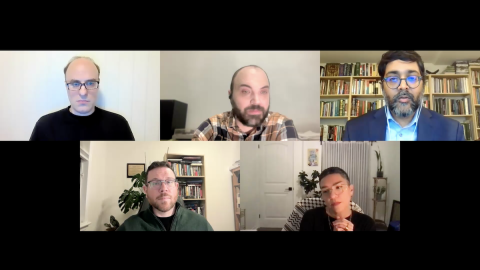Compelling Expression?
It is that time of the year again. School has begun, and rules are being made, left, right and centre. Some of us are feeling the relief of sending children and grandchildren off to learn and have fun – and also to get a bit of distance from the “Why? Why? Why?”
But a few of us are worried. We can remember being in school and, each year, having to learn the rules in our new classrooms or our new schools. Those rules kept changing. What was important in one school or class was not an issue in another. Most kids – and teachers – would try to remember the rules and do our best to comply. But, what happened when we asked why? What is the purpose for the rule?
Sometimes, the kids who asked why were sent to the principal’s office. Sometimes, they were simply ignored, but in a few classes, students and teachers were given an opportunity to explore the politics and philosophy of rules. Those classes were the ones that engendered the habits of democracy.
Around a thousand years ago, when I was a student teacher, I was placed in a school where the principal had a rule: No sweaters are allowed. Really. Were there too many sweaters in the lost and found? Was he allergic to wool? Did the kids do naughty things with sweaters? No one seemed to know.
I knew one thing, however: the rule was clearly unfair and an unreasonable limit to freedom of expression.
Each one of us, when we get up in the morning, chooses the clothes we will wear for the day. Those clothes are not simply objects to cover nakedness and keep us warm. Our clothing choices convey who we are and how we want the world to see us. When schools and workplaces limit those choices with rules that require “appropriate attire” they are compelling expression. These institutions are obliging us to convey a pre-approved message, a message that may or may not comport with our own views.
Generally, we think of freedom of expression as a right to express what we choose. We don’t often remember that we also have the right NOT to communicate what we choose NOT to convey.
A uniform is one of the clearest examples of compelled expression. If I attend a school where I must look like all of the other students, my opportunity to be identified as an individual is critically diminished. We ask our military and para-military, such as police forces, to serve as a unit, not as individuals who have unique characteristics. Why are we asking students and chain restaurant employees to do this as well? Do we believe that this uniformity will make them easier to control? That their standard of behavior will be higher when dressed this way? That there will be less bullying and infighting? Fewer distractions? Or is it a kind of shorthand to show the world that this institution has high standards? Whichever option we choose, we have to ask whether we are actually achieving any of these goals.
Standing when a national anthem is played, or singing along with that anthem is another common form of compelled expression. We barely notice when it is played during morning exercises in schools or at sports events.
This summer, football player Colin Kaepernick refused to stand for the U.S. national anthem. He said, “I am not going to stand up to show pride in a flag for a country that oppresses black people and people of color.” And thanks to the U. S. Constitution, he has that right. He has also been the focus of some of the ugliest and most racist commentary imaginable.
In January 2009, Erik Millett, then principal of Belleisle Elementary school in New Brunswick, decided to stop having his students sing O Canada each morning. He explained that he was accommodating certain religious families that did not want their children to stand for the national anthem. By February, he was receiving hate messages and death threats. Mr. Millett left the school and the district superintendent ordered that O Canada be returned to the morning routine.
Mr. Millett and Mr. Kaepernick have taken up the cause against compelled expression. And they have certainly been wounded in battle. What if we taught our children that there are many ways to express our views – and that we can choose not to express someone else’s views if we object to them?
What would happen if our schools helped students and teachers understand that their rights and freedoms are important, and that they have the right to exercise them?

